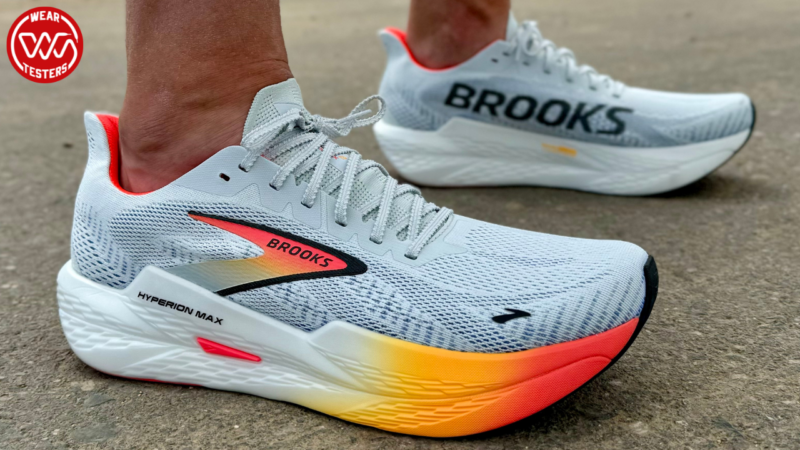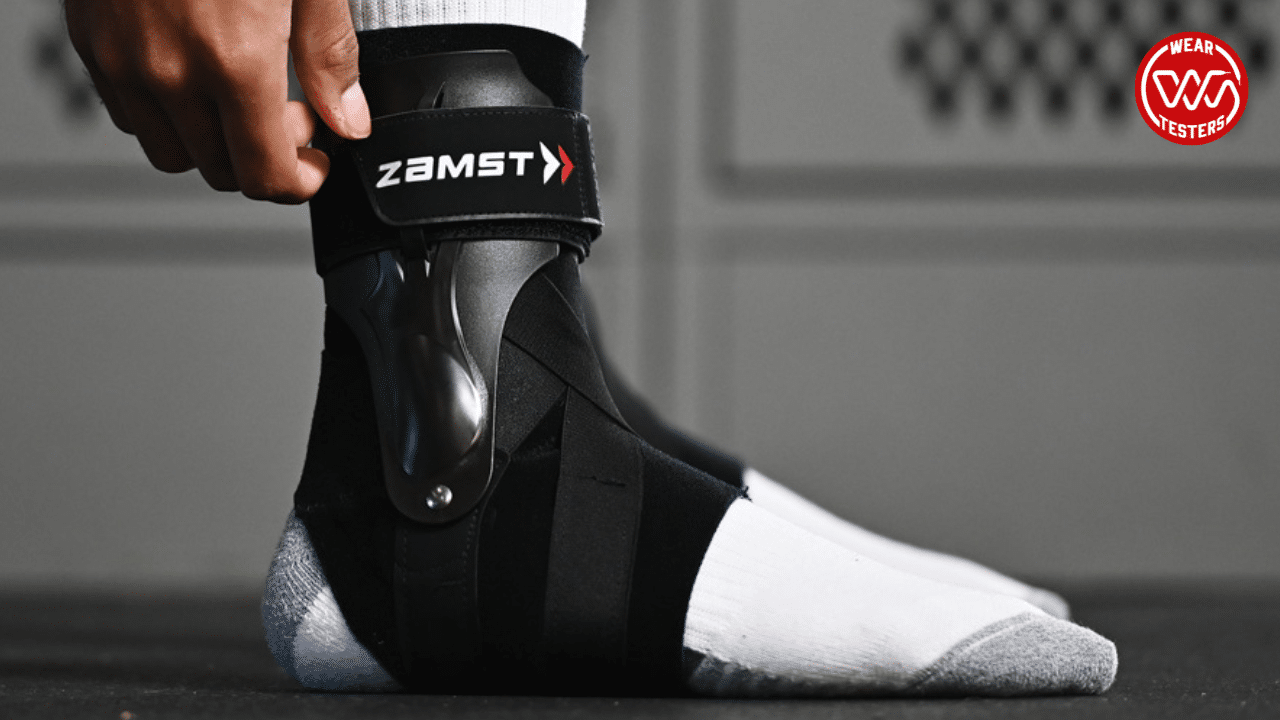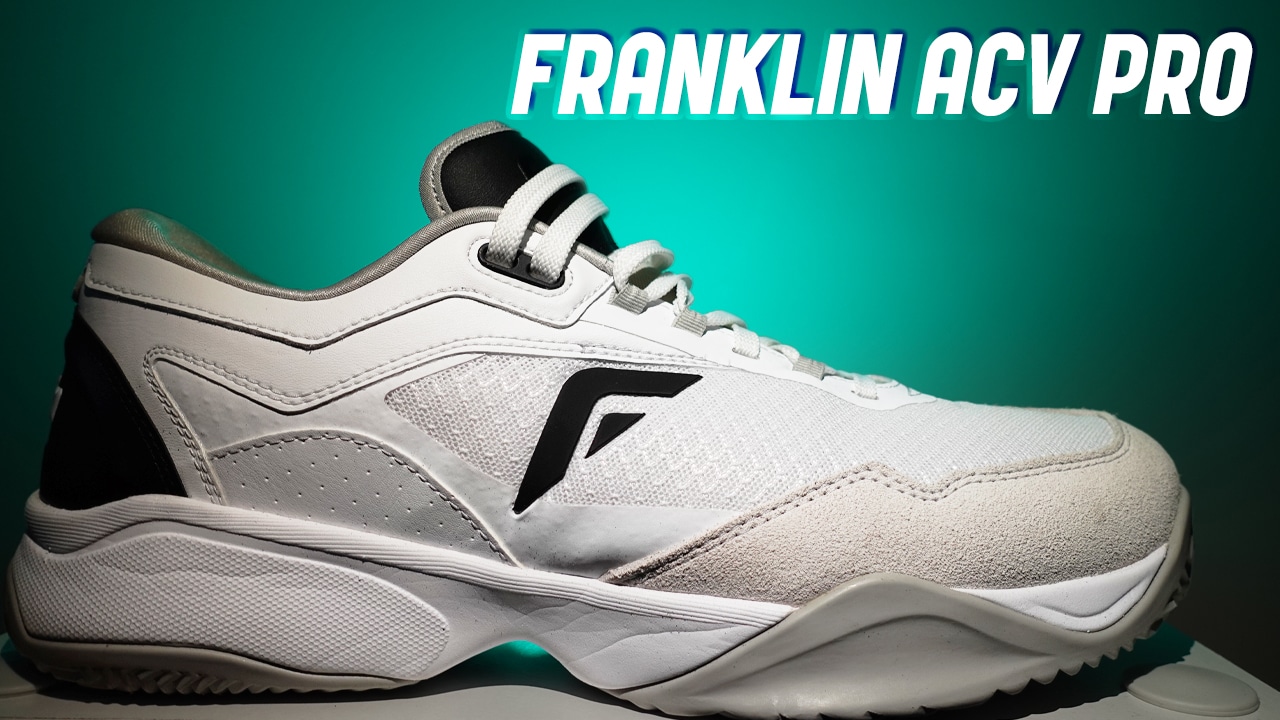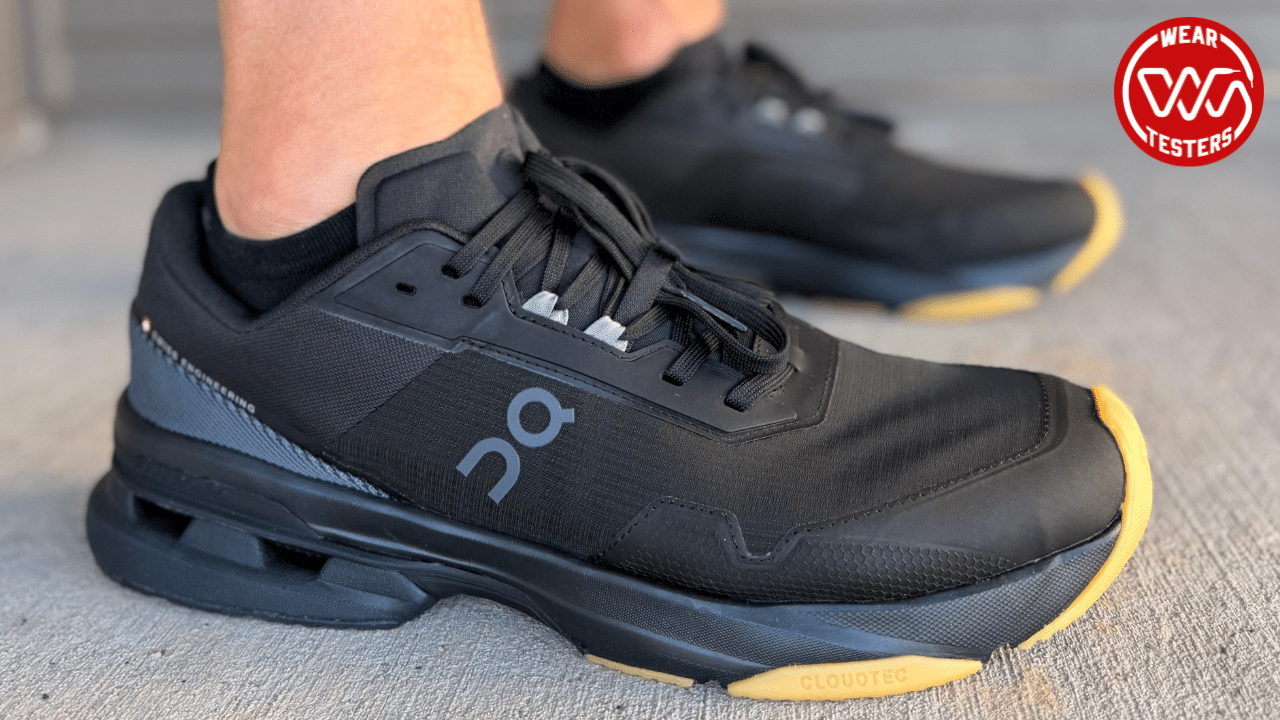The Brooks Hyperion 2 and Brooks Hyperion Max 2 have plenty in common – such as their midsole foams, their comparable upper materials, and a very similar (read: fantastic) fit. Brooks also categorizes both as speed shoes intended for a variety of your pacier efforts.
But there is also a lot that separates the two models – namely, how much of that nitrogen-infused midsole is present in each, how much they weigh, and the Hyperion Max 2’s RapidRoll Rocker geometry and new SpeedVault plate.
And just as with the two shoes on today’s docket, our two reviewers likewise have a great deal in common. We are both runners, for example. And, um, yeah, we’re also…both…runners.
And that’s pretty much where things start to diverge between us.
In case you’re new around here, I’ll explain. I’m a whopping 5’0” tall. Drew is 6’6”. To take a comparison Drew once made a step further: if you saw us walking down a path together, you’d likely think him one of the lankier members of the Fellowship – perhaps of the Elven or Wizard variety. And you’d assume I was the one bearing a certain ring to Mordor.
Point being, we have vastly different builds, and we also run very different paces. Drew’s legitimately fast; whereas I’m only slightly-faster-than-slow if I happen to also be actively avoiding Ringwraiths at the time [Editor’s Note: can we continue to expand this analogy? Who’s Gimli? Who’s Gollum?].
So, high-fantasy references aside, let’s see if there’s any connection between who we are as runners and where our preferences may (or may not) align when it comes to Brooks’ updated Hyperion 2 and Hyperion Max 2.
Brooks Hyperion 2
Release Date: July 1, 2024
Price: $140
Weight: Men’s 6.8 oz., Women’s 6.2 oz.
Drop: 8mm
Sizing: True to size
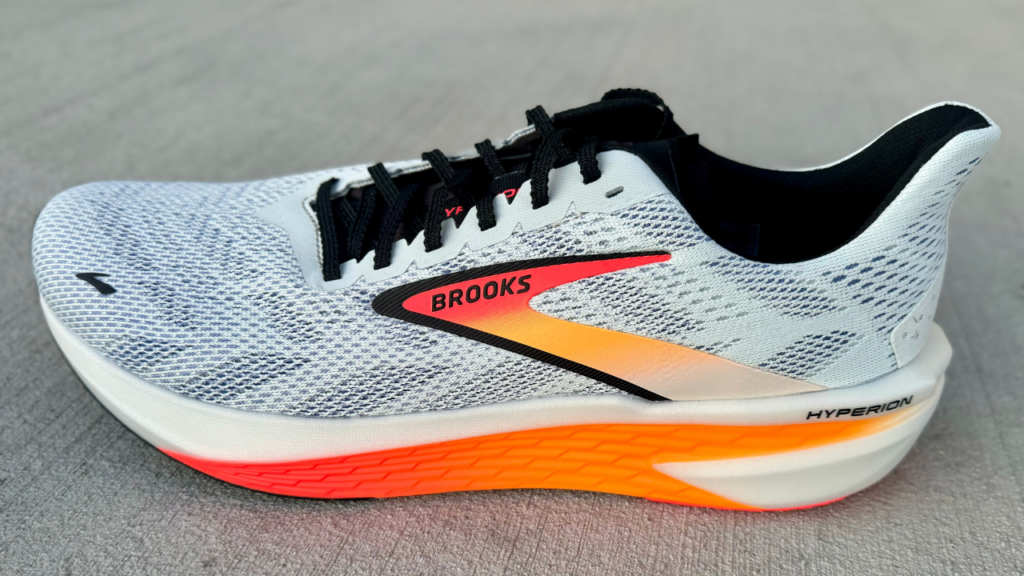
What Changed on the Brooks Hyperion 2?
Annie: The Hyperion 2 gets a DNA FLASH v2 midsole, which is the same nitrogen-infused foam found in Brooks’ current carbon racer, the Hyperion Elite v4. Brooks bills the compound as lighter and as delivering almost 10% more energy return than the previous version of DNA FLASH. Impressively, the shoe has indeed lost weight this year, despite a 4mm increase in stack height. The shoe maintains its 8mm drop.
The new upper material feels much nicer to the touch, performs better overall, and, as far as I’m concerned, looks better, too. The lacing is slightly asymmetrical, and the lockdown wraps the foot in a way that feels somewhat akin to a soccer boot/cleat. Brooks also employs its RoadTack Rubber, which we found performed phenomenally well back when we reviewed the Glycerin 21. Given the difference in use case, the application here in the Hyperion 2 is less burly, and the traction pattern sports less texture overall.
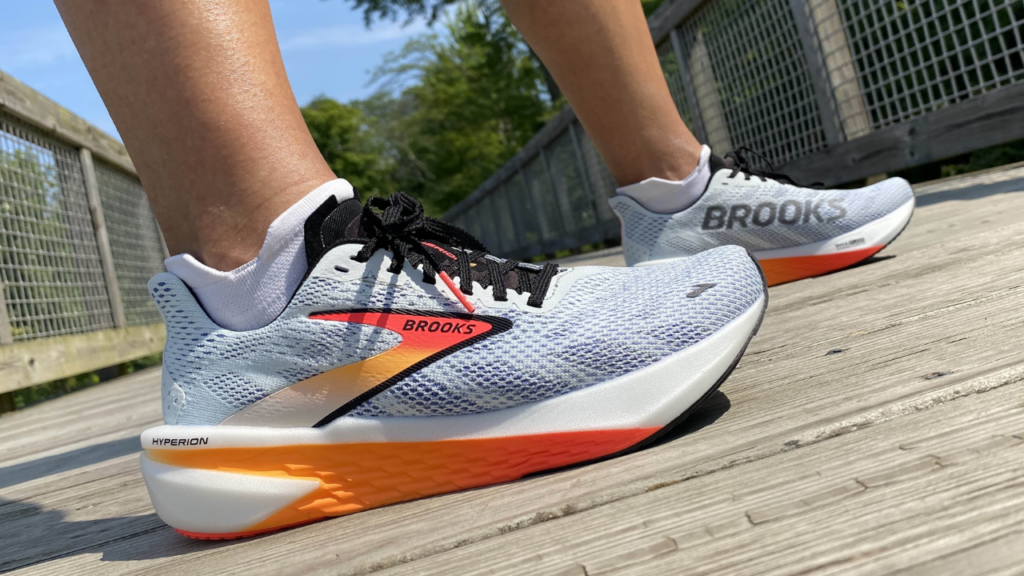
How did the Hyperion 2 work for Annie?
Annie…who could easily blend in amongst inhabitants of the Shire if they didn’t notice her ambiguously ethnic appearance…
Annie: The Hyperion 2 treated me well. It ran TTS overall with perhaps just the teensiest bit of extra length on me (though not nearly to the degree I found in the Hyperion of last year). I went with a runner’s knot for a feeling of complete security when cornering or changing paces more abruptly. But the upper was comfy and breathable, even in hot and humid conditions. The little elf flare on the heel comes up quite high (it has this in common with the Hyperion Max 2). But while I was aware of its presence when walking around, I never ended up being conscious of it on the run.
The added 4mm of midsole made the cushioning level feel akin to the original Hyperion Max, albeit with a very different ride. The geometry here is still much more traditional, as opposed to the rockered ride found in the Hyperion Max (1 and 2). So those who prefer a more natural, flexible forefoot will definitely gravitate toward the Hyperion 2 over its Max sibling.
I got the snappiest response out of the DNA FLASH v2 at around tempo pace or faster, but I was also pleased to find the shoe remained a viable, natural-feeling option for slower warmup and cooldown paces. The absence of a pronounced rocker (or plate, for that matter) and the more traditional feel overall means the shoe is never going to run away with you without your permission during those times you’re trying to take it easy. You’re very much the one in charge here.
I can often get away with moderate-to-lower stack shoes for some of my longer runs if the drop also remains on the lower end of the spectrum. But I think the Hyperion 2’s moderate stack combined with its 8mm drop left me wanting the foam to be distributed a tad more toward the forefoot in those circumstances. So it wouldn’t be my first choice for runs over about 75-90 minutes or so. But the comfort was there for runs in that range or shorter.
All in all, I really enjoyed the Hyperion 2 for tempo runs and shorter, sharper interval-type workouts. It could easily be a track workout shoe. And again, it surprised me with how easily it could be one’s daily trainer, depending on what that person’s everyday running might look like and how much stack may be needed (or just preferred) underfoot.
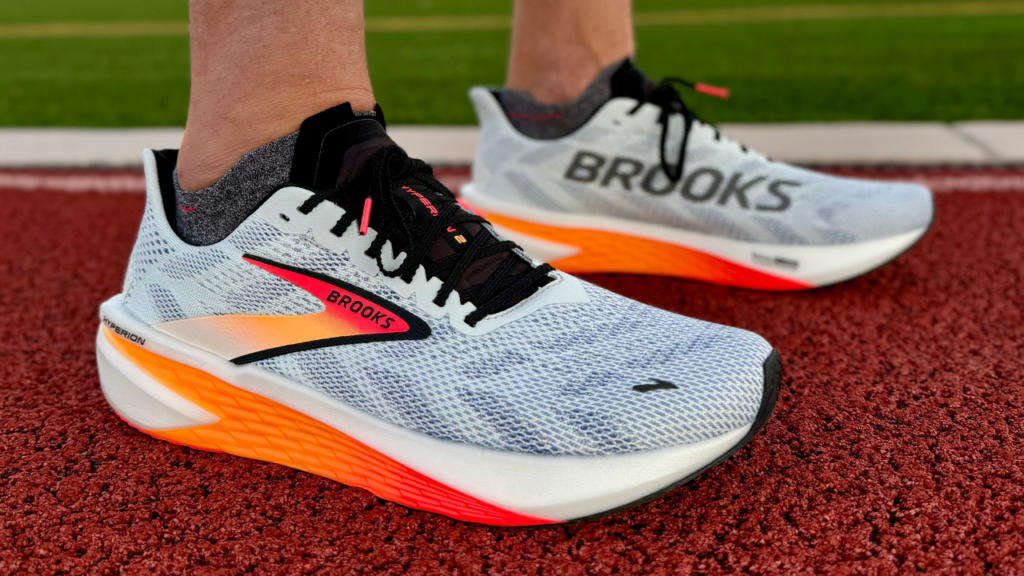
How did the Hyperion 2 work for Drew?
Drew…who with access to proper hair and makeup departments, could give Orlando Bloom or Sir Ian McKellen a run for their money in equal measure…
Drew: I’m never going to complain when someone compares me to a young (and objectively beautiful) Orlando Bloom with his smooth skin and incredible archery skills…but I was always partial to Gandalf. The self sacrifice and leadership whenever and wherever middle Earth needed it was epic. And lest we forget, it was Gandalf that identified the singular talent of Frodo and his ability to carry the ring into the heart of Mordor. That’s the kind of leadership you can’t teach. But, back to the Hyperions at hand…
Despite the discrepancy in our sizes, Annie and I ended up in basically the same place in terms of our opinion of the Hyperion 2. A bouncy midsole that feels lacking in the forefoot, well built for track workouts, and mostly useful for the shorter/faster stuff. But also a shoe whose luster fades the longer the run.
I’m sure that’s partially due to the hugely stacked running shoes she and I now get to test on a regular basis, but the firm but bouncy nature of the Hyperion 2 just leaves a bit to be desired in the impact protection department. And with both of us no longer young, we need that protection.
The Brooks Hyperion 2 is one of those shoes that’s perfect for the high school or college track athlete. Their ankles, knees, and hips still have that youthful vigor, they’re not doing the super long runs required of marathon training, and spending a lot of time on the oval ripping 200s, 400s, and 800s. That’s a use case that minimizes the deficiencies of the Hyperion 2 and maximizes everything it does well.
It’s also a use case that is focused more on building leg and foot strength versus depending on a shoe to provide a large assist. Basically, if your use case fits the one I just outlined, the Hyperion 2 easily justifies the $140 price point and will perform admirably over a season or more.
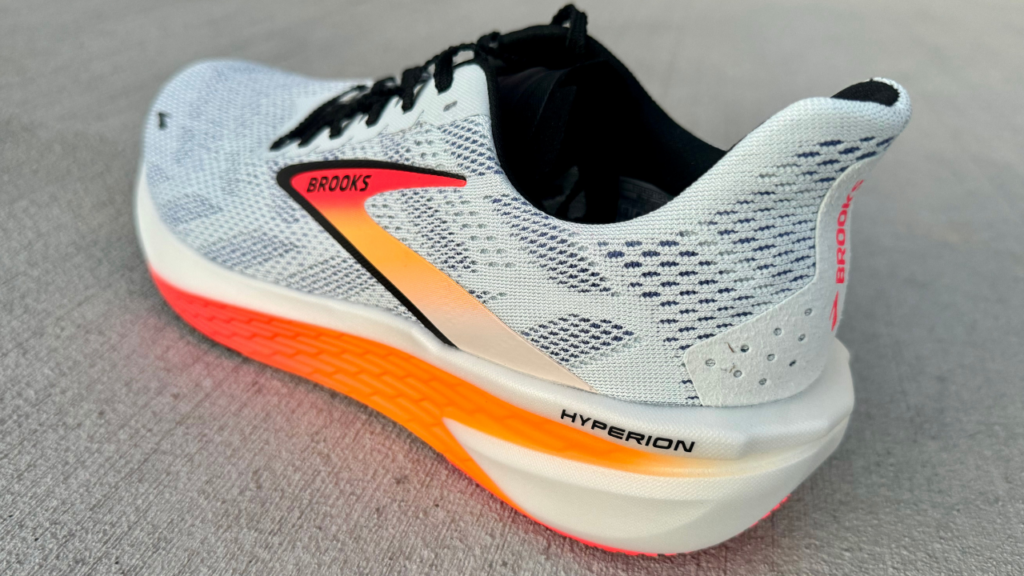
Brooks Hyperion 2 Pros
- Super lightweight
- Snappy & responsive
- Forefoot flexibility allows for a natural feel
- Excellent upper
- Ready for speed/quickness without depending on a plate or rocker
- Available in a GTS (“Go To Support”) version for those seeking a speedy, lightweight shoe with some added stability (a rare combo that can be helpful to many)
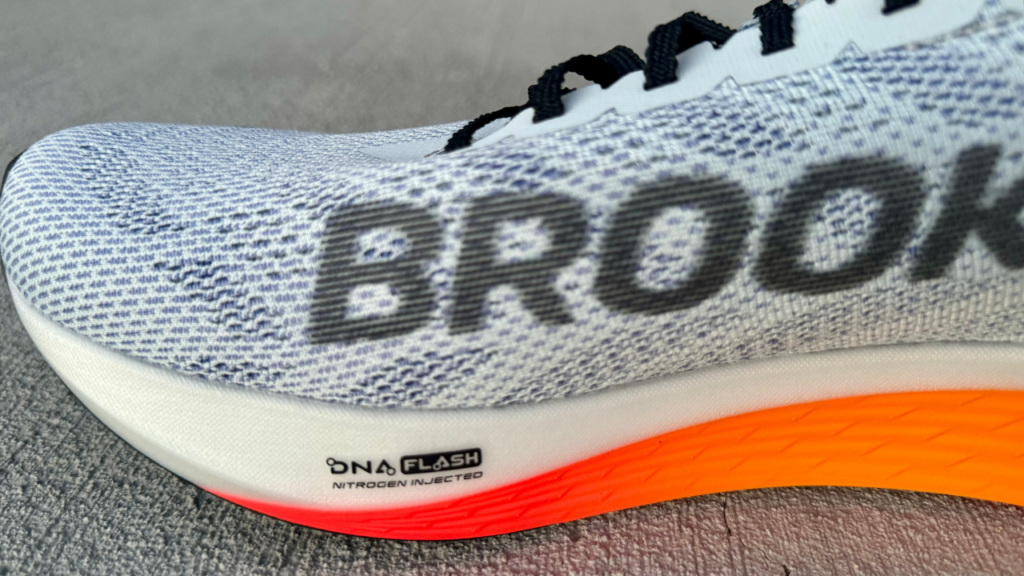
Brooks Hyperion 2 Cons
- Lack of impact protection from the midsole
- Thin stack of forefoot foam doesn’t provide the oomph of other speedy shoes
- Lack of assistive geometry may feel underwhelming for those that rely on rockers and/or plates
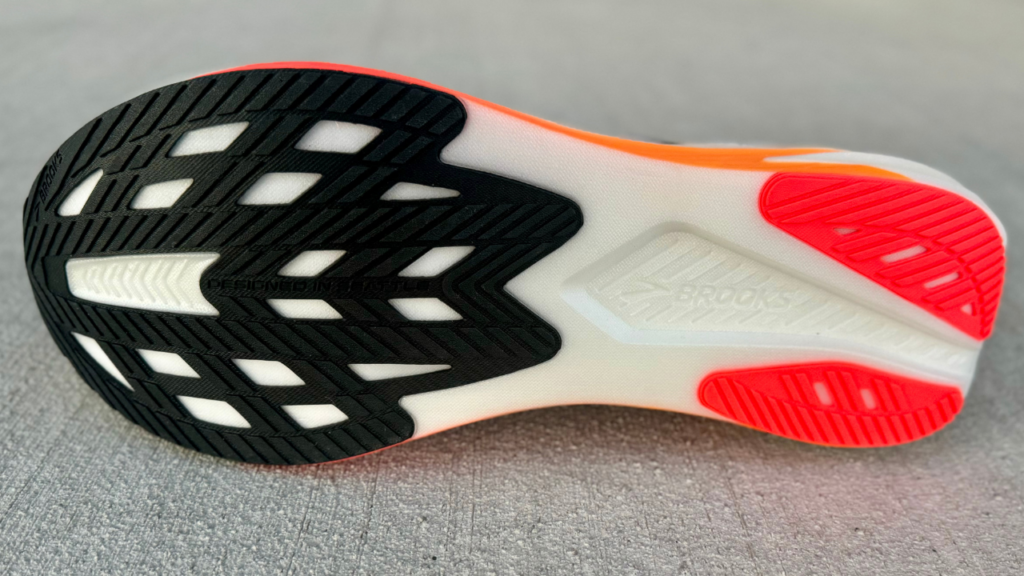
Is the Hyperion 2 worth $140?
Annie: If you’re someone who insists on captaining your own ship and does well with an 8mm drop and more modest amount of cushioning, the Hyperion 2 packs an impressive amount of pace versatility in a comfortable, lightweight package. For my part, I’d take it over the same-priced Brooks Ghost 16 absolutely any day of the week. Whether or not the Hyperion 2 can also be a legit option for longer efforts is very much going to depend on the runner (it can’t really do that job for me). But if you generally like that lightweight, more traditional and streamlined feel in your daily trainers and workout shoes, I doubt there’s much about the Hyperion 2 that could disappoint.
Drew: As I mentioned above, if your use case comes close to what I outlined above, the $140 price point isn’t an issue and the Brooks Hyperion 2 will deliver more than enough value. And again, I agree with Annie, the Hyperion 2 is a no brainer over the also priced at $140 Ghost 16 as it’s got a more streamlined fit, is more versatile, and a lot more fun.
Brooks Hyperion Max 2
Release Date: July 1, 2024
Price: $180
Weight: Men’s 9.1 oz., Women’s 8.1 oz.
Drop: 6mm
Sizing: True to size
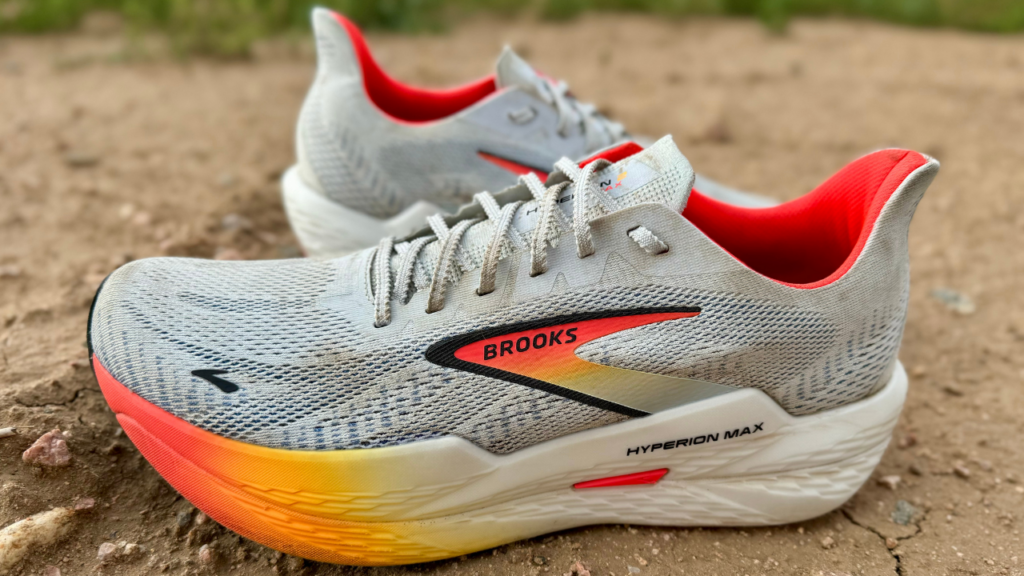
What Changed on the Brooks Hyperion Max 2?
Annie: As with the Hyperion 2, the Hyperion Max 2 got a similarly well-crafted, new upper and now also sports DNA FLASH v2 – just a lot more of it. Compared to the original Hyperion Max, it gains 4mm in the heel and a glorious 6mm in the forefoot (changing the shoe from an 8mm drop to a 6mm drop). But where the Hyperion 2 managed to gain stack but lose weight, the Hyperion Max 2 gained both stack and weight – approximately 1.5 oz in the women’s sample size.
The weight gain is likely spread across more than one feature, but at least some of it may be down to the addition of a new SpeedVault plate. The majority of Brooks reps have described the plate as PEBA-based, whereas a few other Brooks product materials have listed it as TPU or nylon. But the main takeaway is that the plate is there, and it’s more flexible and forgiving than carbon.
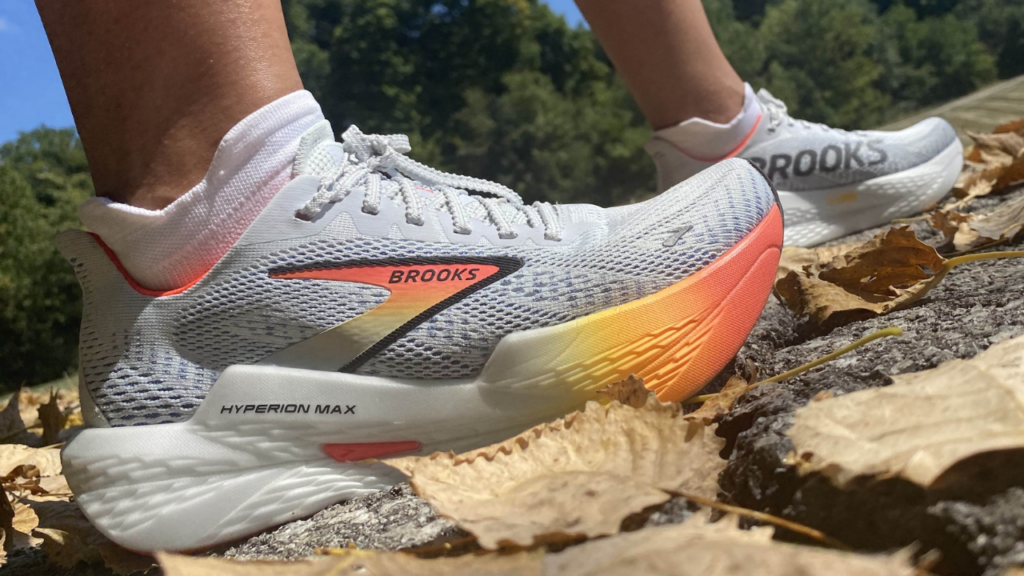
How did the Hyperion Max 2 work for Annie?
Annie…who is just happy for the extra millimeters of stack height so she can see the barista over the counter when she orders a coffee…
Annie: Let me start by saying that another recent Brooks update, the Ghost Max 2, fell flat for my purposes when compared to the original version I so enjoyed. That was due to multiple factors (some of which I’m honestly still trying to figure out). But one such culprit was the (to me) noticeable weight gain. An extra 0.5 oz combined with other changes took the original Ghost Max’s unexpected versatility and threw it out the window.
So, when I learned that the weight increase on the Hyperion Max 2 – a shoe that, yes, has protective cushioning, but is still ultimately intended as a speedy, responsive trainer – would be gaining around three times that amount ( ~1.5 oz of additional heft), I had…concerns.
Luckily, those concerns were immediately assuaged in my very first run in the Hyperion Max 2. The ride was still characterized by super swift transitions via Brooks’ RapidRoll Rocker (a feature found in the original Hyperion Max), and the nimble feel was preserved. The added SpeedVault plate and undoubtedly upgraded foam really allowed the whole setup to shine above and beyond the original.
The result was an incredibly well-unified group of elements that felt natural and fun to my (mostly) midfoot strike. Comfort was vastly improved over longer distances, and I didn’t feel like it came at the cost of much, if any, quickness.
All that said, if you are looking for a super compressive and bouncy feel, you won’t find that here. But you won’t be sacrificing when it comes to protection in the Hyperion Max 2 either. Brooks struck an oh-so-sweet balance of responsiveness and a touch of softness that I really loved. That measured approach made it all the easier for me to fall into rhythm with the shoe pretty much regardless of what effort I was trying to run.
I will say, however, that the Hyperion Max 2 especially loved moderate paces, with marathon pace being a particular sweet spot. So it could sometimes be a little too easy for a relaxed, daily effort to unintentionally start creeping into a more moderate zone. It wasn’t as though I felt I’d lost the reins on the shoe. It was just so damn fun to clip along in it that it was sometimes difficult to keep easy efforts 100% easy.
So, funnily enough, the Hyperion 2 – though snappier and much lighter – turned out to also be a little more adept at recovery paces. Whereas I personally found the Hyperion Max 2 most thrived on paces that were moderate and faster.
This meant the Hyperion Max 2 became an instant favorite of mine for long, uptempo efforts. And I even preferred it on speedier interval days when I wanted a bit more pampering than the Hyperion 2 might be able to offer. Go figure.
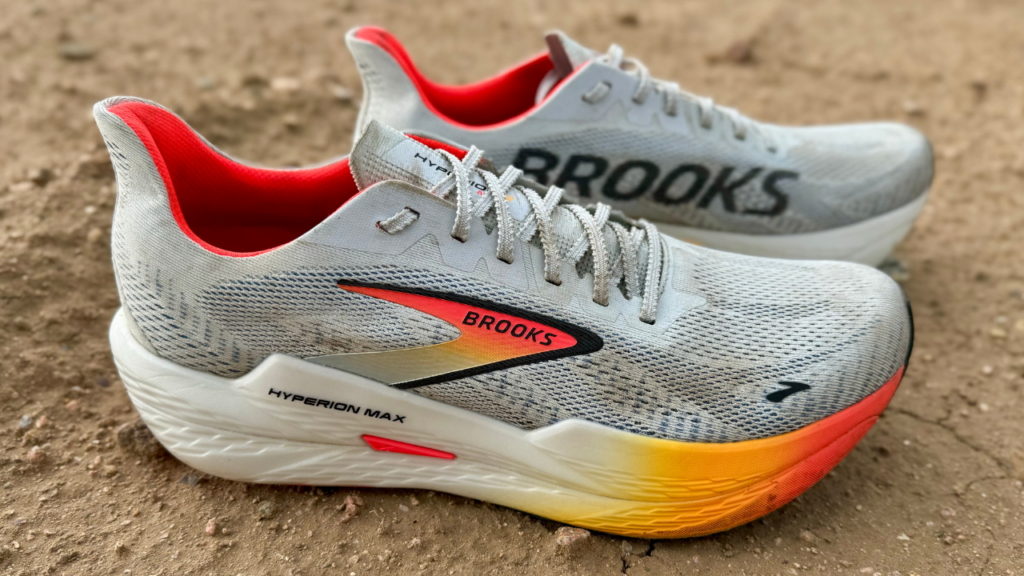
How did the Hyperion Max 2 work for Drew?
Drew…who doesn’t need the extra height but probably needs the extra cushion…
Drew: Even tall people like being able to gain 1.5-2” in height. I’ll never put it in the positive column of a shoe, but some might. Regardless, the extra cushioning underfoot was welcome and did work to modernize the Hyperion Max line.
And though modern in look and stack height measurements, the feel is, as Annie mentioned, decidedly more firm and responsive. The 6mm drop worked extremely well with the firmer cushioning setup. But just because it doesn’t feel as squishy as a lot of what’s currently available on the market doesn’t mean it’s bad. Just a different feel for those who don’t need the squish.
I felt the impact protection was solid. Though I had a much better feel of where the ground was and its general shape, I didn’t feel the asphalt, rocks, gravel, or pavement taking a toll on my legs. This is a higher stack, bouncy warrior of a shoe for those that prefer better ground feel beneath their feet. That’s not a priority with shoe companies these days, but as shoes have gotten infinitely squishier and soft, I’ve met many people rebelling against the eventual terminus of running on marshmallowy foam clouds.
And I can’t blame the. Sometimes it just feels better to be more connected to the ground. As a result, the Brooks Hyperion Max 2 is a great long run shoe. It protects the legs over the long haul, can pick up the pace during prescribed uptempo sections, and prevents the wearer from suffering horrid form breakdowns because the footstrikes aren’t coddled by giant tufts of squishtastic foam.
This shoe won’t be for everyone. The feel mentioned above will turn some runners off. The heel being aggressively cutaway will also be a non-starter for equally aggressive heel strikers. But to some, the heel will inspire better form and, even during long, tiring runs, keep the wearer’s foot strike firmly in the midfoot.
I did find the Brooks Hyperion Max 2 to work well for me, my form, and my desire to feel the ground while still getting the punch of a plate and bounce of a supercritical race day style foam. But this will be a polarizing shoe and anyone that’s a verified “soft squad” member will need to look elsewhere for an uptempo or long run shoe.
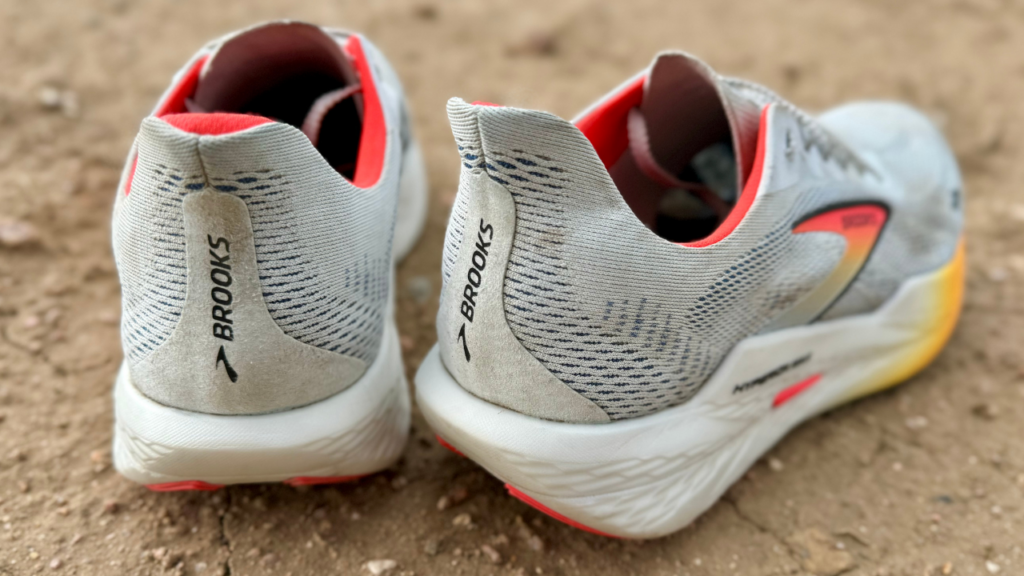
Brooks Hyperion Max 2 Pros
- Long-distance prowess
- Nimble, despite the higher weight
- Excellent upper (with an elasticized and gusseted tongue)
- Well-cushioned ride with quick transitions and no mush
- Midfoot striker friendly (not always true for shoes with such prominent rockers)
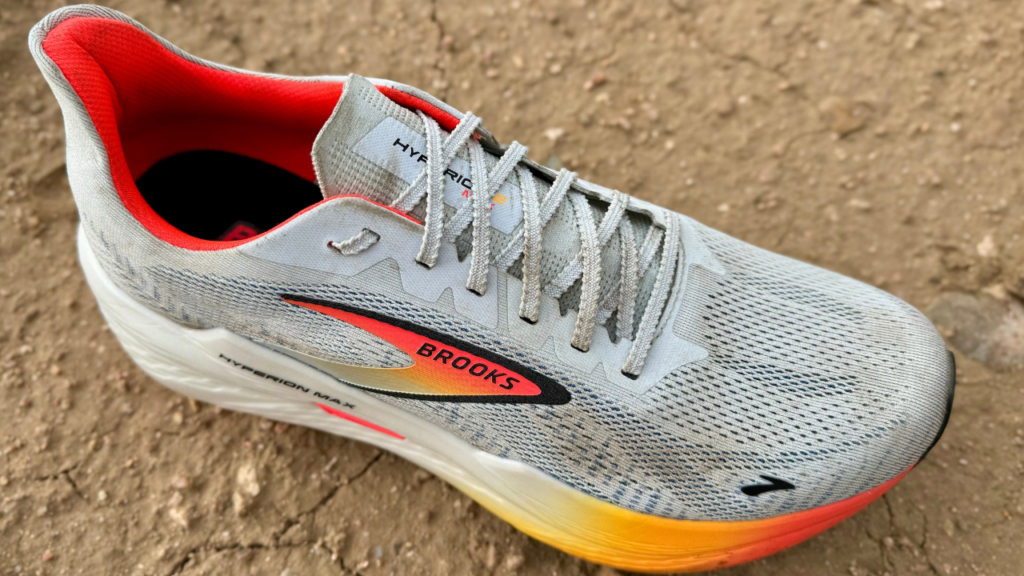
Brooks Hyperion Max 2 Cons
- Stiff, rockered forefoot may be off-putting to some
- Cutaway heel won’t work for aggressive heel strikers
- DNA FLASH v2 may still not be quite soft enough for those who love the squish
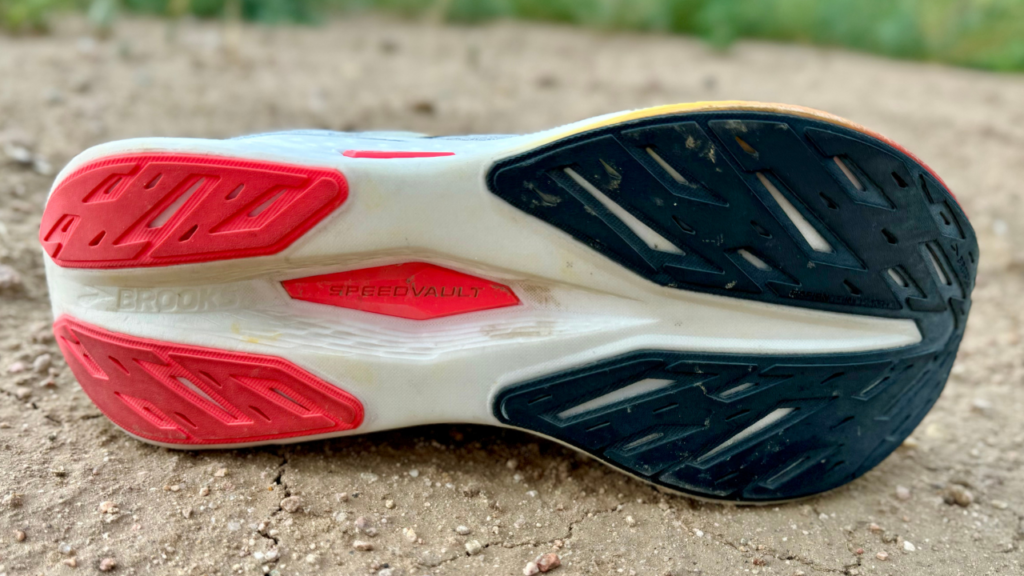
Is the Hyperion Max 2 worth $180?
Annie: Ok, so, I thought the Hyperion Max was overpriced at $170 last year. And now the Hyperion Max 2 is $180. So, the logic might follow that I think the Hyperion Max 2 is likewise overpriced. I don’t think it is. If you look at the changes made to the Hyperion Max 2, it now has a much clearer market category – the plated or non-plated supertrainer.
It sits alongside shoes like the New Balance SC Trainer v3 ($180), the Saucony Endorphin Speed 4 ($170) and Kinvara Pro ($180), the Hoka Mach X 2 ($190), and so on. If you want to go wide with it and really bump things up a notch, you run into the ASICS Superblast 2 ($200), the New Balance Fresh Foam X Balos ($200), and the Adidas Adizero Prime X 2 Strung ($300).
Ultimately, $180 is in the range and perhaps even at the lower end of it depending on the net you cast. Value will really come down to your own set of preferences. If a less squishy, but still very comfortable midsole and delightfully quick, assisted transitions appeal to you, the Hyperion Max 2 is well worth the price. I have thoroughly enjoyed running in it, and it’s without question a shoe that I will continue to come back to in between testing.
If, on the other hand, you are looking for max stack and a PEBA-based midsole foam with max bounce and a splashier vibe, then it’s not for you. But the Brooks Hyperion Max 2 is a total hit in my book.
Drew: Annie nailed it. The Brooks Hyperion Max 2 offers something a bit different from its peers but can nail the same distances and versatile use cases.
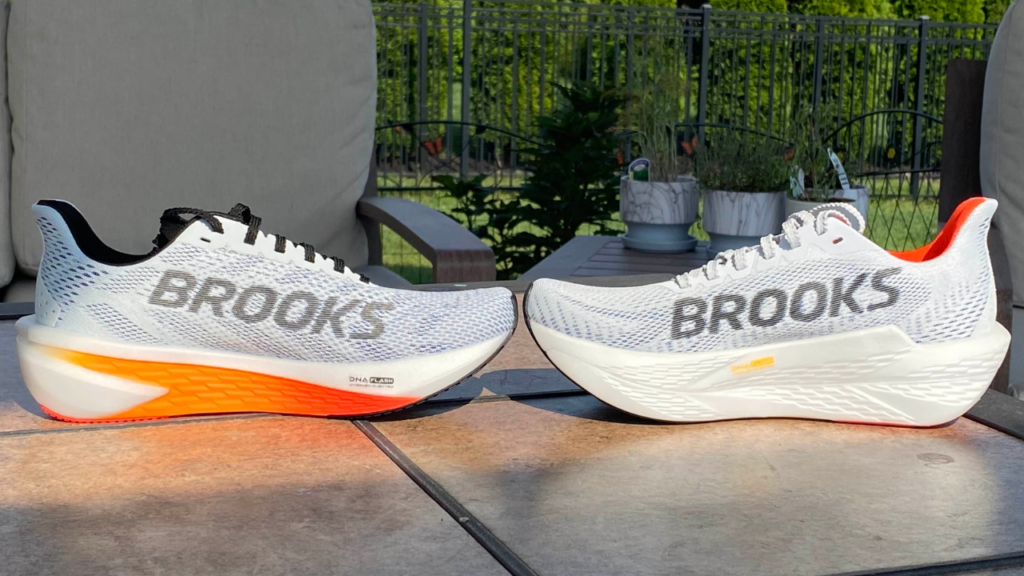
Are the Hyperion 2 and Hyperion Max 2 wide foot friendly?
Annie: Both the Hyperion 2 and the Hyperion Max 2 have enough width where I happen to need it most — through the ball of the foot on the lateral side. So, despite having a technically wide foot in that particular spot, the standard width sizing has fit me incredibly well. Like, legit, the fit has been excellent.
If you typically need additional width elsewhere in your shoes, though, you might find yourself a little cramped. The volume is mostly accommodating through the midfoot, but the fit does narrow through the arch. I like the way the upper wraps snugly there. But if that is sometimes a problem area for you, you may notice yourself spilling over that medial edge of the platform a tad. And, unfortunately, I don’t believe Brooks has plans to release wide versions in either model. But maybe Drew knows something I don’t know…Drew?
Drew: There’s no way we’re getting a Hyperion Max 2 wide. But it’s a very comfortable shoe that will have room for most regular wide footers. There is that midfoot caveat though. The elasticized and gusseted tongue in addition to the skinnier midfoot make it feel race-like through the middle. It signals to your mind to go fast…but if that’s where your foot has trouble fitting into other fast shoes, you may need to pass.
That midfoot will break in. Runners with taller feet will only get more comfortable in it after the first couple of runs where the midfoot will lock them almost too tightly onto the footbed. Trust that the lightweight mesh will mold to the foot and the tongue setup will loosen around the bridge of the foot.
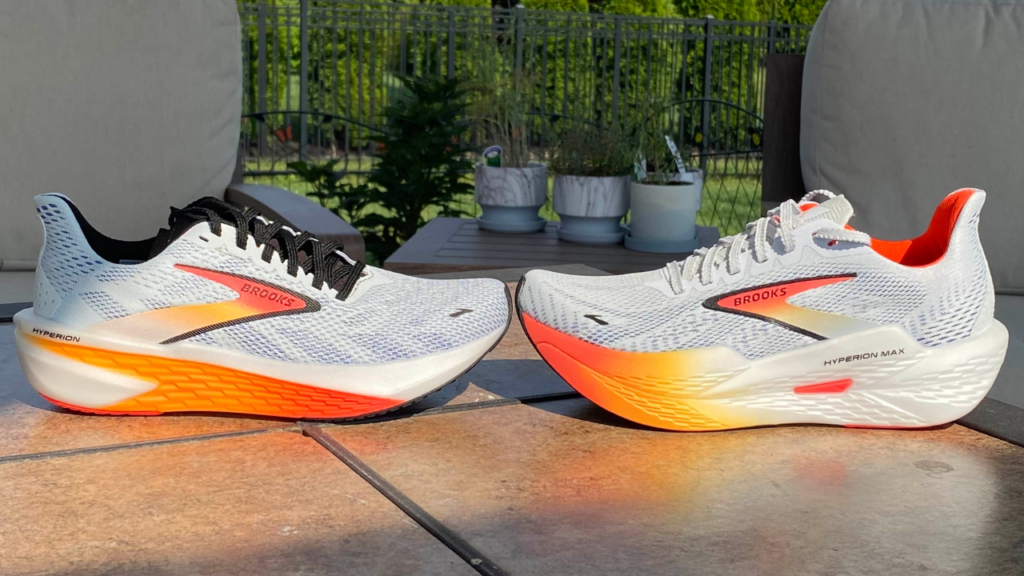
Brooks Hyperion 2 and Hyperion Max 2 Summary
Annie: If you prefer your uptempo trainers to have flatter, more flexible forefoot geometry and a traditional stack with a featherlight weight to match, the Hyperion 2 is the way to go. It could also work as a budget-friendly 5-10K race shoe – maybe even a half-marathon racer for you purists, speed demons, and/or those of you out there who are simply made of sterner stuff than I am.
If, however, the stiffer forefoot doesn’t spook you, the Hyperion Max 2 offers a more noticeably cushioned, yet still very responsive ride. It manages to defy its weight with its efficient transitions and is a great companion for longer, uptempo runs. Despite being someone who often enjoys a more flexible ride, there was simply nothing about the plate/rocker combo in the Hyperion Max 2 that felt like interference. Instead, it all felt like pure upside to me [Editor’s Note: I’ve got the perfect GIF for this].
Drew: The Brooks Hyperion 2 is made for those (typically) younger speed demons who can leave flaming trails like a time traveling Delorean when they take to the track. The perfect runner for the Hyperion 2 doesn’t need or want a carbon plate during their speed sessions and wants to maximize building leg and foot strength. Think of it as a modern day track flat.
The Brook Hyperion Max 2 is built for runners training for the long stuff. Half marathons, marathons, and above. The runner that wants something that can go long and fast but never loses touch with the ground…all while packing a modern stack height and plate.
The Hyperions have vastly different use cases. but due to their construction, bring something to the table that’s more in line with old school running preferences. A zag while the rest of the industry zigs. And if that’s intriguing to you, enjoy choosing from two well built and effective shoe options.
How does the Author Run?
Drew Whitcomb (age 42, 6’6″ 195lbs): Runs daily with a once a week rest day. Runs a lot of miles due to testing needs and a growing affinity for long-distance races. Regularly competes in marathons, half-marathons, 10k, and 5k races.
Annie Keris (age 39, 5’0” 117lbs): Typically follows a “two days on, one day off” running routine. “On” days include daily miles, speed work, and long runs. An “off” day usually involves yoga and mobility/recovery work. Enjoys occasional racing but perhaps enjoys the training process even more. Gravitates most toward the half marathon distance, but ventures into the 10k and 5k as well. The marathon is thus far uncharted territory…
Disclosure
While Brooks did send pairs of the Hyperion 2 and Hyperion Max 2 to facilitate this review, the company had no involvement in this review, didn’t receive an advance look at it, and has not attempted to influence it.

